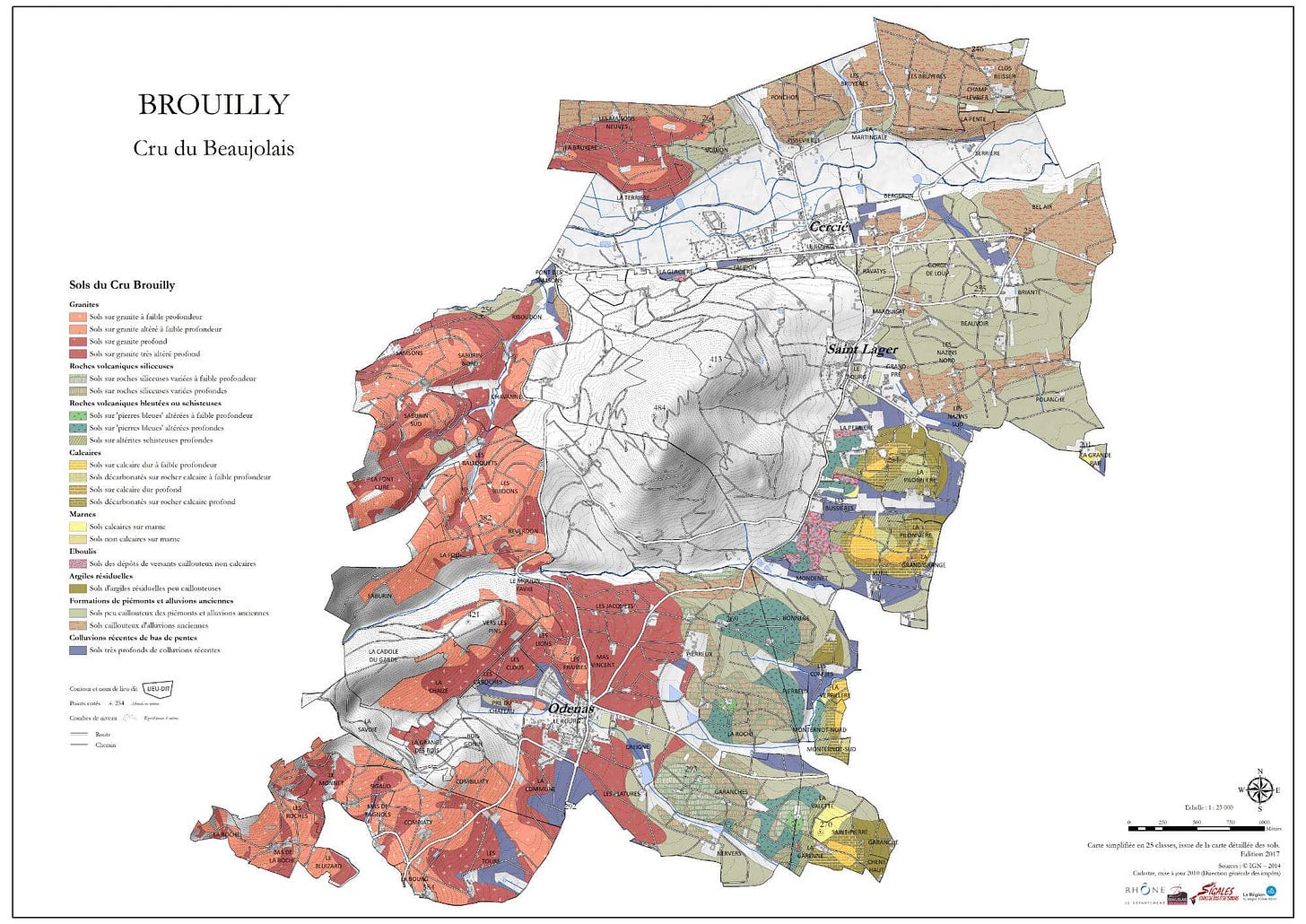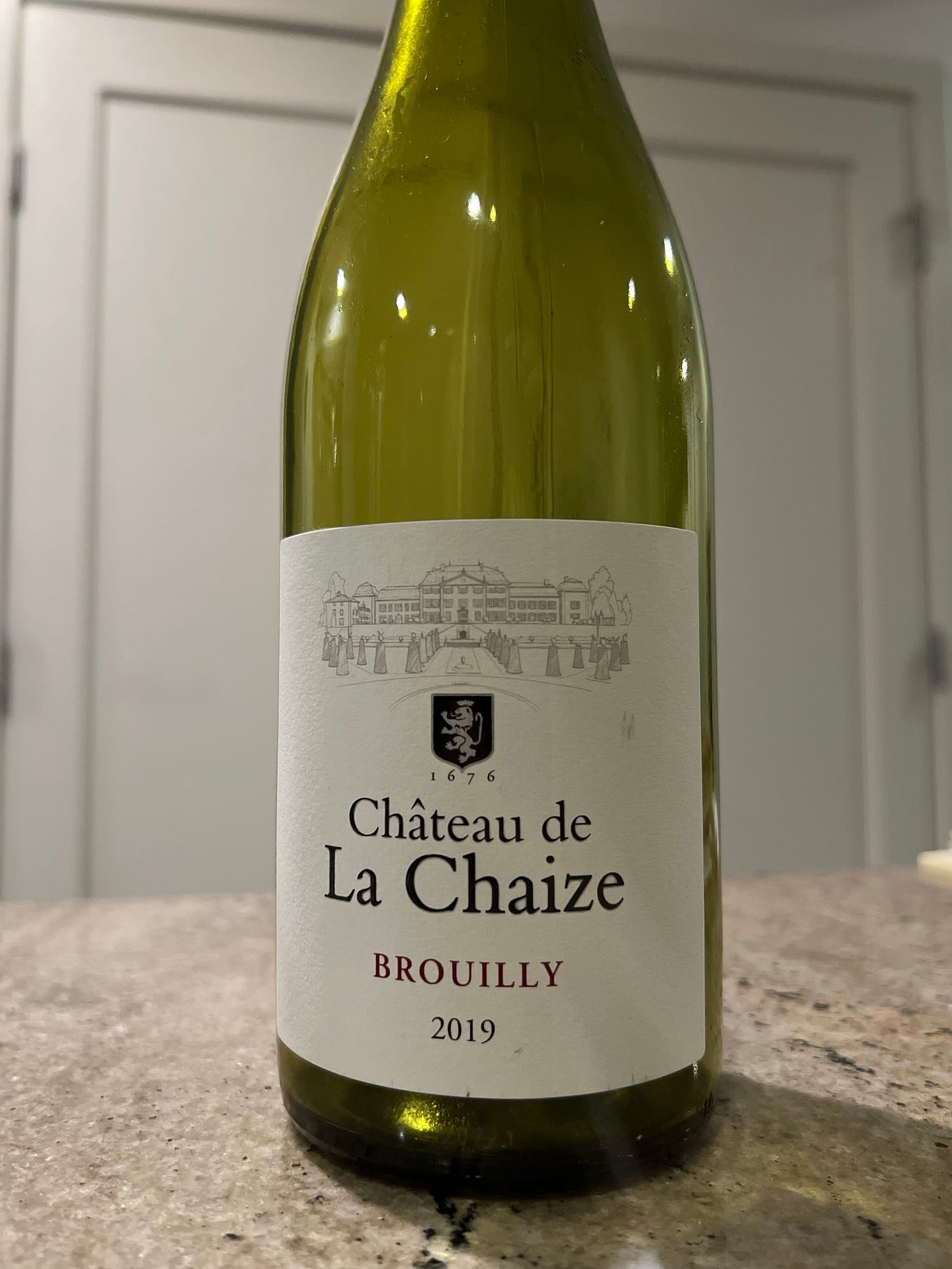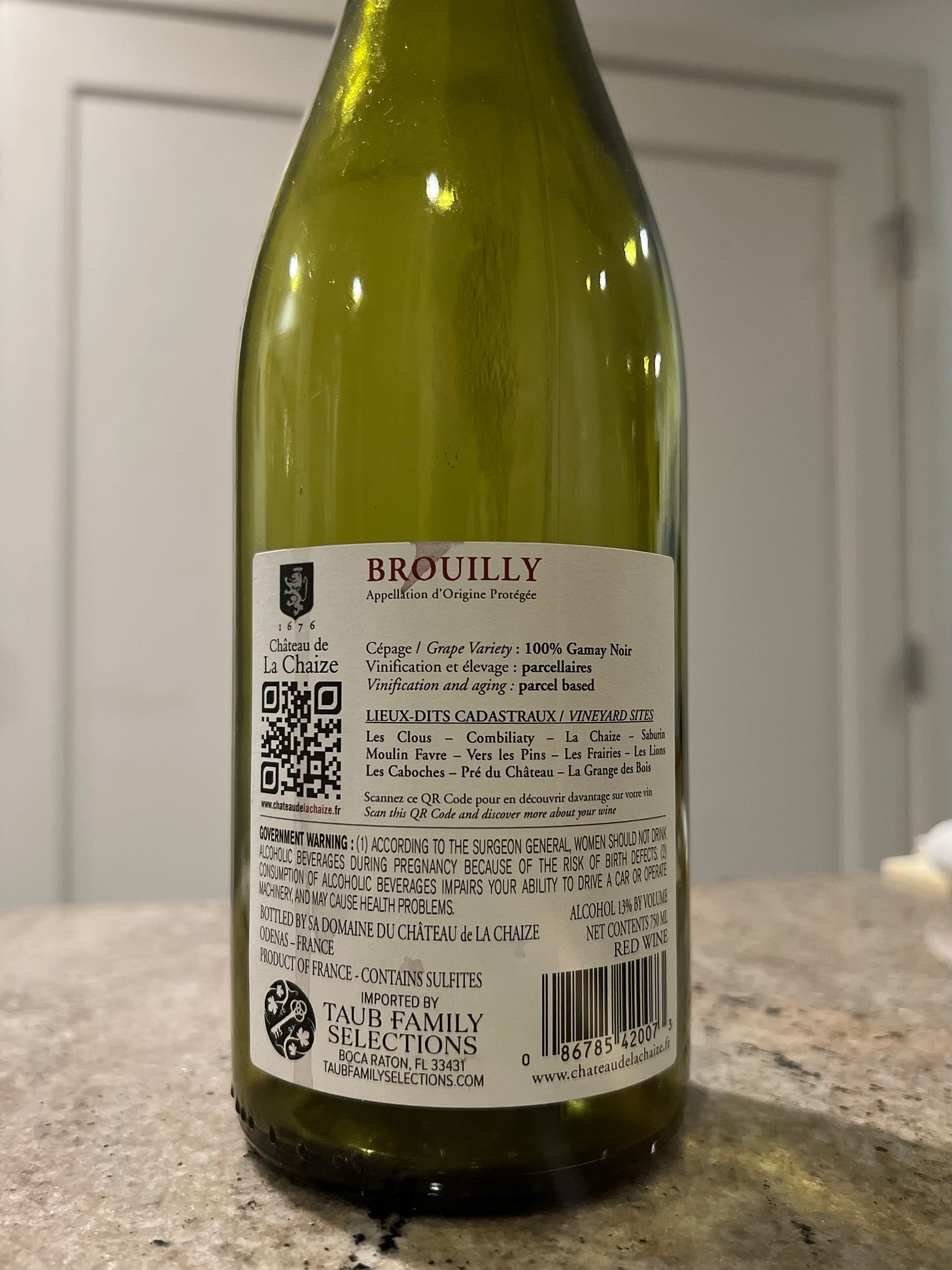The most recent Cru Beaujolais we explored was Brouilly. According to Benjamin Lewin, Brouilly is considered one of the weaker Crus. Out of all the Crus, Brouilly is the biggest, consisting of 1,250 hectares of vineyards and 530 growers.
As we explored in earlier Cru Beaujolais, the name Brouilly also has a Roman influence, just like Juliénas, Saint-Amour, and Régnié. It is named after Brulius, a lieutenant in Julius Caesar's army. A hill was awarded to Brulius, who then settled there to grow vines and make wine. This hill subsequently became known as Mount Brouilly. Isn't that a very neat story?
There are two Crus (or AOCs) within the Mount Brouilly region: Brouilly and Côte de Brouilly. We will dedicate a separate post to Côte de Brouilly later. Brouilly surrounds the hilly Côte de Brouilly Cru and consists of flatter vineyards. This southernmost Cru borders Beaujolais Villages to the south and is renowned for producing wines that are best enjoyed young and fresh.
There are some notable lieux-dits in the region, including Saburin, Pissevieille, Briante, Pierreux, Combiaty, Les Platures, Les Nazins, La Roche, Les Bruyères, and La Terrière. However, during my exploration, I did not encounter any of these being bottled as single-vineyard wines (most were blends sourced from multiple vineyard sites).
Given the large size of the Cru, vineyard site is crucial. The entire Cru exhibits a diverse range of soils, including Pink Granite, Blue Stone, Limestone, Marl, Clay, and Shale. However, each vineyard possesses a unique soil composition that significantly contributes to the terroir. As a result, wines from Brouilly can vary considerably from cuvée to cuvée.
As usual, I uncorked two bottles of wine, focusing on the most basic offerings – not single-vineyard wines and not prestigious cuvées. My goal was to observe the inherent variability within the Cru. Given the diverse growing conditions within Brouilly, the two wines exhibited significant differences, making for an interesting tasting experience. Interestingly, I found that price and the reputation of the winemakers did not seem to be the sole determinants of wine quality in this instance.
2022 Château Thivin Brouilly Reverdon
Château Thivin is a well-known winemaker in the Brouilly and Côte de Brouilly Crus. I had high expectations for this entry-level cuvée, but unfortunately, it didn't quite meet them. While the wine certainly displayed all the hallmarks of a classic Gamay – fruitiness, freshness, and vibrancy – it lacked a certain distinctive character or captivating complexity that I was hoping for.
The technical information for this Reverdon cuvée is as follows: the grapes are sourced from a 7-hectare south-facing vineyard planted with 45-year-old vines on pink granite and sandy soils. The vineyard is certified organic. The wine was aged in stainless steel tanks before bottling.
I will delve deeper into Château Thivin in the upcoming post dedicated to Côte de Brouilly. I encountered a truly excellent entry-level cuvée from this producer during my exploration of that Cru.
2019 Château de La Chaize Brouilly
Beaujolais wines have long been celebrated for their exceptional value. However, this reputation has been challenged in recent years as the costs associated with production, land, transportation, and overall market dynamics have significantly increased. In this era of economic uncertainty, discovering a high-quality bottle at an affordable price can feel like a true victory.
I purchased Château de La Chaize's Brouilly for a mere $15 at Empire Wine during a trip to Albany earlier this year. Given the incredibly low price point, the lesser perceived prestige of the Brouilly Cru, and my somewhat underwhelming experience with their 2018 Fleurie in a WSET class, my expectations were admittedly low. However, I was pleasantly surprised upon uncorking the Brouilly.
The wine exhibited a captivating array of aromas and flavors, including red cherry, black cherry, red plum, strawberry, black plum, cranberry, raspberry, bubble gum, violet, blossom, baking spices, and a subtle touch of oak. This level of complexity was truly unexpected from a wine priced at only $15.
Château de La Chaize is commendable for its transparency, clearly disclosing the vineyard sources for the Gamay grapes: Les Clous, Combiliaty, La Chaize, Saburin, Moulin Favre, Vers les Pins, Les Frairies, Les Lions, Les Caboches, Pré du Château, and La Grange des Bois.
Château de La Chaize, a historic monument renowned for its exquisite gardens, was constructed in the late eighteenth century. For three centuries, the estate remained in the hands of the same aristocratic family before being acquired by the Maïa Group in 2017.
The domaine boasts a single contiguous block of vineyards, meticulously divided into over 11 distinct lieux-dits. This impressive holding represents a significant portion of Brouilly production, accounting for approximately 10% of the total.
While many of their wines are celebrated for their approachable and easy-drinking character, discerning wine enthusiasts should seek out the "Vieilles Vignes" and "Réserve de la Marquise" cuvées for a more refined and complex experience. Keep an eye out for these labels the next time you explore the world of Cru Brouilly.
Did Cru Brouilly stand out among the Crus Beaujolais? I don’t think so. However, I’m eager to explore more Cru Brouilly wines for several reasons. Firstly, they are incredibly affordable and generally deliver good quality, making them a delightful experience for many wine consumers. Secondly, becoming a discerning buyer of Brouilly requires a bit of research and patience to uncover the hidden gems within this Cru, making the journey of discovery all the more rewarding.








